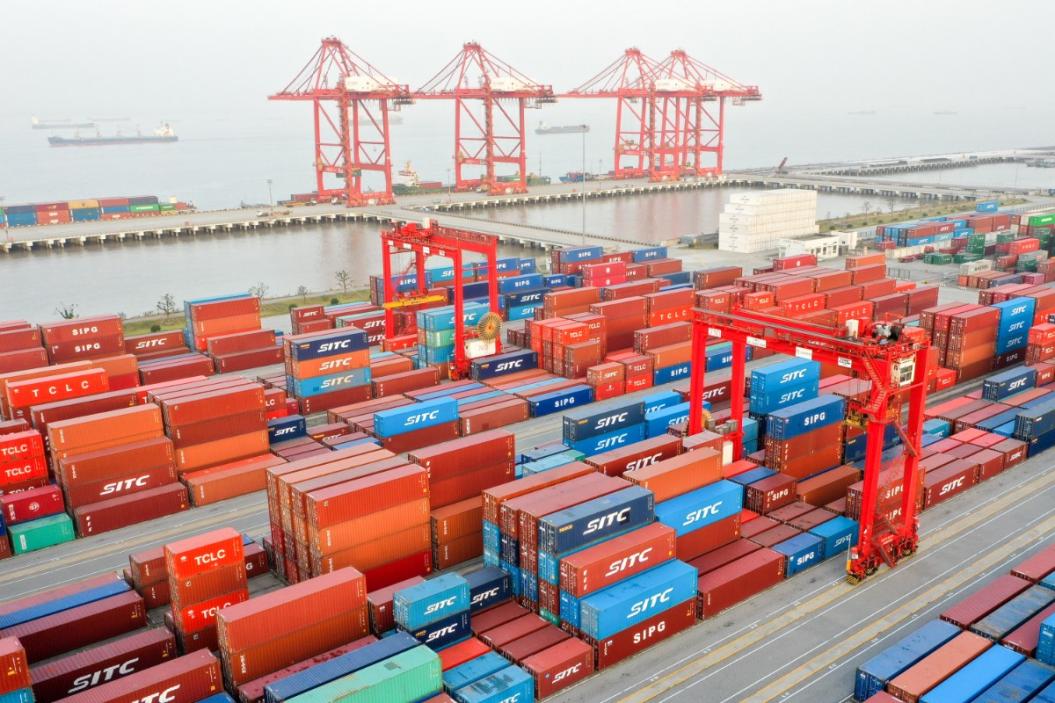2024-05-23
Since China promoted the construction of the "the belt and road" policy, it's economic and trade ties with the world become closer. In 2023, trade data between China and other countries around the world reached new heights. According to statistics from the General Administration of Customs of China, China's total import and export value was 41.76 trillion yuan last year, an increase of 0.2% compared to the previous year. Among them, exports reached 23.77 trillion yuan, an increase of 0.6%; Imports amounted to 17.99 trillion yuan, a decrease of 0.3%.

With the steady progress of the the Belt and Road development plan, China's import and export transactions with global trade activities have become more active and frequent. According to the data released by the General Administration of Customs, in 2023, China's trade with Belt and Road countries reached 19.47 trillion yuan, an increase of 2.8%, accounting for 46.6% of the total trade value, up by 1.2 percentage points. Trade with Latin America and Africa reached 3.44 trillion and 1.98 trillion yuan, respectively, with an increase of 6.8% and 7.1%. In the fourth quarter, trade with the European Union and the United States rebounded, with annual trade values 5.51 trillion and 4.67 trillion yuan, accounting for 13.2% and 11.2% of the total trade value, respectively.
Digital Economy Helps Real Economy Development: Many regions in China Explore New Directions for Silk Road E-commerce Development
Silk Road e-commerce is an important measure to actively promote international cooperation in e-commerce by leveraging the advantages of China's e-commerce technology application, model innovation and market scale in accordance with the initiative of jointly building the "the Belt and Road". As a new business model, 'Silk Road E-Commerce' provides a wide range of products and services to global consumers with its convenience, efficiency and low cost features. On November 23, 2023, the second Global Digital Trade Expo hosted the "Silk Road E-Commerce Cooperation Forum, where the "Silk Road E-Commerce Cooperation Development Report" was released for the first time.
The report shows that so far, China has signed bilateral e-commerce cooperation memorandums with 30 countries across five continents, and the "Silk Road E-commerce" circle of friends has expanded to 30 countries. In 2023, the proportion of cross-border e-commerce trade between China and 31 Silk Road e-commerce partner countries exceeded 30% of China's total cross-border e-commerce trade.
On December 14, 2023, the Action Plan for Pudong New Area to Promote the Construction of the Silk Road E-Commerce Cooperation Pilot Area was officially released in Shanghai. According to the plan, by 2025, Pudong New Area in Shanghai will basically established a comprehensive service system for Silk Road E-Commerce, creating a high-quality central functional area for Silk Road E-Commerce Cooperation. This initiative aims to further promote trade cooperation with Belt and Road countries through e-commerce.
On April 16, 2024, the World Internet Conference Digital Silk Road Development Forum was held in Xi'an, China. Guests from nearly 50 countries and regions gathered to discuss "Connectivity for Common Prosperity." They explored the ancient and new trade path interwoven with digital connections, and building bridges of global connectivity in the digital era.

In Xi'an, the starting point of the ancient Silk Road, cross-border e-commerce has become a new engine for trade growth of the "the Belt and Road". With a series of China EU trains shuttling back and forth, high-quality agricultural products such as wheat and honey from Central Asia have entered the domestic market, and "Made in China" such as new energy vehicles and photovoltaic modules are moving towards countries jointly building the "the Belt and Road". By the end of 2023, the China-Europe Express (Xi'an) has launched a total of 525 cross-border e-commerce special trains, ranking first in the country in terms of operation volume.
Silk Road e-commerce Adds African Economic Development with Digital Wings
According to a recent statistical report released by TechCabal Insights, a digital economy consulting firm, e-commerce in Africa is developing rapidly and has become a new economic growth point. The potential for the development of the African e-commerce market will be further demonstrated in the future. According to statistics, the revenue of e-commerce in Africa was approximately 32.5 billion US dollars in 2022, and it is expected to increase to nearly 60 billion US dollars by 2027. Meanwhile, the number of consumers participating in online shopping in Africa is continuously increasing, from 388 million in 2022 to 610 million in 2027.

According to the "Global Financial Prosperity Barometer" released by PayU, a mobile payment service provider based in the Netherlands, Africa is the only continent where mobile payments exceed traditional bank usage. Today, the penetration rate of smart phones in Africa is getting higher and higher, the Internet population is close to 500 million, and e-commerce users are conservatively estimated to exceed 80 million. This has provided a favorable development environment for African e-commerce companies and mobile payment companies such as Jumia, Mall For Africa, PayU, and M-Pesa.
Analysts believe that Africa is on the verge of a prosperous era of rapid development of digital currencies and mobile payment technologies. A study by McKinsey predicts that if the experience of e-commerce development can be successfully replicated across the entire African continent, mobile payment revenues in sub-Saharan Africa could reach as high as $16 billion annually. This surge in mobile payments is expected to further drive the rapid growth of the e-commerce market and digital payments. With the rapid development of digital e-commerce, it is believed that Africa's economy will usher in more development opportunities and space in the future.
07-01
07-01
07-01
07-01
07-01
07-01
07-01
07-01
07-01
07-01